- Author: Kathy Keatley Garvey
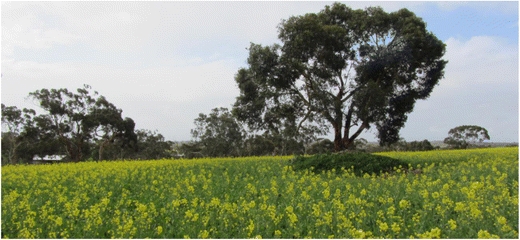
In his paper, titled “Edge-Biased Distributions of Insects: A Review,” Nguyen reviewed how many species of insects show a definite preference for living on the edges of fields and orchards.
This phenomenon can lead to more accurate monitoring and better pest management tactics, said Nguyen and co-author Nansen.
The paper indicates that “the prevalence of such edge-biased distributions has considerable implications for how to sample and monitor insects, and it also suggests that in many cases pest management tactics, such as, releases of natural enemies or insecticide applications can be spatially targeted to field edges.”
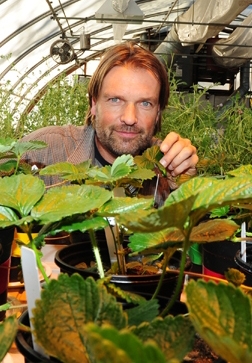
Nguyen traced the history of edge-based distribution of insects in agricultural systems to a study on black bean aphids led by British entomologist C. G. Johnson and published in 1950 in the Annual of Applied Biology. The aphids, major pests of sugar beet, bean and celery crops, spread from the field edges to within, but the edges remained the areas of highest aphid density.
Nguyen also called attention to scientific studies that found that wild bees in high bush blueberry were more prevalent along the edges of orchards, and that the density of the pest, Asian citrus psyllid, prevailed more at the edges of citrus groves than within.
Nansen praised Nguyen's work as outstanding. “Sometimes we professors are fortunate enough to interact with undergraduate students who – even with English not being their first language – possess keen abilities to describe a scientific problem or phenomenon in clearly articulated scientific writing, and Derrick is a great example of that!”
“He started writing drafts of this review article about six months before he started as a graduate student,” Nansen said. "This review article is an example of how we can use writing of review papers as a tool to engage with undergraduate students before they start their thesis projects.” Professor Jay Rosenheim of the UC Davis Department of Entomology and Nematology also helped with the drafts.
“We are supposed to focus more and more on ‘diversity' and here we have an undergraduate from Singapore publishing in a very prestigious journal,” Nansen added.
The UC Davis scientists suggest that mathematical modeling approaches can partially explain edge-biased distributions but “that abiotic factors, crop vegetation traits, and environmental parameters are factors that are likely responsible for this phenomenon.”
They advocate more research, especially experimental research, “to increase the current understanding of how and why edge-biased distributions of insects are so widespread.”
“In my opinion, discussions about edge-biased distribution of insects tend to be entomocentric; much emphasis is often put on the insects themselves,” Nguyen commented. “However, agricultural insect pests are dependent on their host plants for survival. Interestingly, it has been shown in various systems that agricultural crops also display edge effect as well. Therefore, through my review, I would like to bring attention to this correlation and propose insect-plant interactions as a potential explanation of edge effect and broaden the discussion about this widely observed but insufficiently understood phenomenon.”
Nguyen received a bachelor's degree in plant sciences from UC Davis in December 2017, graduating with highest honors. A high-achieving scholar, he was on the dean's honor list, College of Agricultural and Environmental Sciences, every quarter since the fall of 2015. He enrolled in the UC Davis graduate student program in entomology in January 2018.
“I am interested in IPM, insect behavior and insect ecology, and greenhouse production of leafy vegetables,” he said. “Currently I am working on projects that explore the potentials of hyperspectral imaging technology as early detection tools for pest infestation and insect host selection based on the framework of preference-performance hypothesis. As my research model, I focus on the interactions between vegetables (bok choy and spinach) and their insect pests (leafminers and armyworms).
Nguyen served as an assistant training officer with the Singapore Armed Forces (SAF) from April 2014 to March 2015. For his studies at UC Davis, he received a 2015-2019 undergraduate and graduate scholarship sponsored by Agri-Food and Veterinary Authority of Singapore.
“For my career plan, since I am currently sponsored by AVA, I will be working for them for six years upon my graduation,” Nguyen said. “In the long term, I am interested in doing a Ph.D in imaging technology for pest detection, plant health status analysis and food quality analysis.”
Well done.
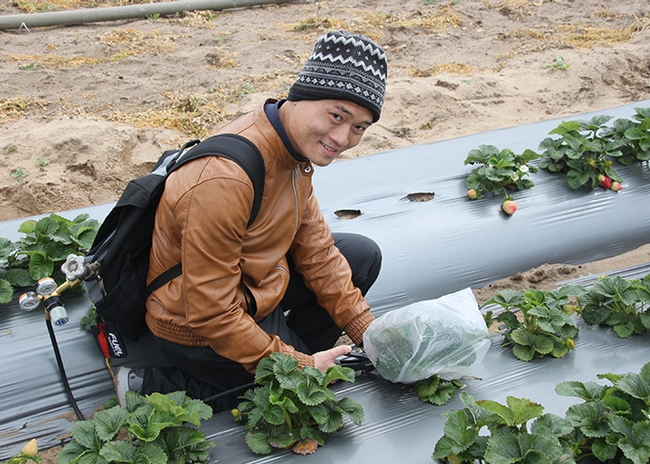
- Author: Kathy Keatley Garvey
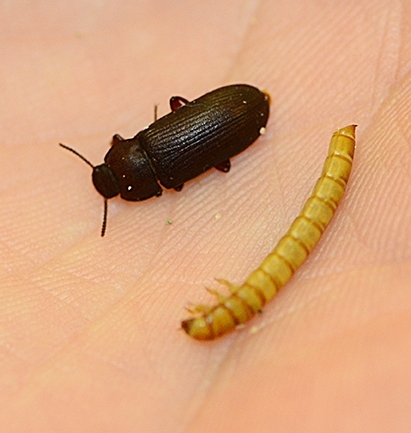
And if you attended the UC Davis Bohart Museum of Entomology open house on Dec. 5, 2015, you may have seen entomology student Wade Spencer showing visitors the larvae devouring his Styrofoam bicycle helmet.
And if you've been following the news from Environmental Protection Agency (EPA), you may have heard about the UC Davis doctoral student who just received a $15,000 grant in EPA's National Student Design Competition for Sustainability Focusing on People Prosperity and the Planet (P3).
That would be Trevor Fowles, a second-year doctoral student in the UC Davis Department of Entomology and Nematology, who submitted his research project, “Beetle Larvae as Biodegraders of Styrofoam and Organic Waste.” He now has an opportunity to score a $75,000 grant in Phase 2 of the competition. He'll be in Washington DC April 7-8 for the National Sustainable Design Expo at the Science and Engineering Festival.
Meanwhile, his 100,000 mealworms in the Briggs Hall lab of his major professor Christian Nansen, are munching up a storm (well, a blizzard of the white stuff) in a project that Fowles hopes will make a difference in breaking down Styrofoam--especially a problem in the nation's landfills--and offer sustainable environmental solutions.
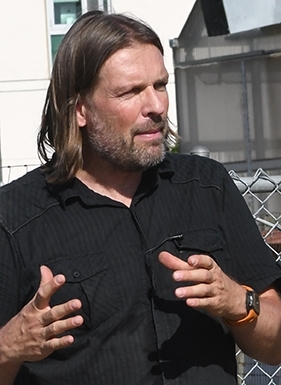
“It's about insects processing waste,” Fowles said of his research. “In three weeks they ate three-fourths of a pound of styrofoam, converting it into biodegradable waste.”
“Trevor's project should be viewed as an example of what entomological agricultural research is all about in the 21st Century--developing new and highly innovative ways to recycle resources and more sustainable food production systems," said agricultural entomologist Christian Nansen, an associate professor of entomology who specializes in applied insect ecology, integrated pest management (IPM) and remote sensing. In addition, the project has an applied evolutionary angle, which Fowles intends to explore.
"Our plan is to selectively breed insects and their microbial gut biome, so that they become highly adapted to breakdown, not only Styrofoam, but also different kinds of agricultural waste products," Nansen said. "Similar to orchard growers bringing in bee hives during flowering periods for pollination, we envision that, in the future, companies will be able to order strains of insects for biodegradation of specific wastes. That is, the future of applied entomology will in different ways be about identifying and developing ways for insects to provide different societal services, including pollination, biological control, and biodegradation."
The UC Davis research project involves designing a pilot-scale styrofoam biodegradation unit to take in regional Styrofoam and organic waste, and establish a high-performance beetle lineage, or the “best beetle larvae to do the job.” The adult beetles also eat Styrofoam, but not as much.
“Organization of our food systems will be a defining challenge in the upcoming century and I believe insects will play a significant role in transforming our agricultural sectors,” Fowles said.
The design emphasizes economic feasibility, community engagement, and environmental stewardship. To be sustainable, the project is aimed at connecting local community stakeholders with research expertise to produce an ecofriendly alternative for Styrofoam disposal.
After biodegrading the Styrofoam, the beetles can be pelletized for animal feed, Fowles said, and the excrement or frass can be used as “high-value amendment to compost mixtures.” He figures that that since Styrofoam by itself is a poor nutrient source for the beetle larvae, he eventually will mix it with organic waste materials, such as, pulp from wine and tomato industries, to optimize beetle development.
The darkling beetles and larvae are pests of stored grains, but the larvae are widely used throughout the world as food for humans; for captive pets, including fish, reptiles and birds; and as fish bait. They are reared commercially on fresh oats, wheat bran or grain, and often with sliced potato, carrots, or apple as a moisture source.
In the wild, darkling beetles and larvae are general decomposers, eating decaying leaves, sticks, grasses, and carcasses.
Fowles said he received his first colony of mealworms in 2016 from then graduate student Tom Nguyen at the Bohart Museum of Entomology (Nguyen is now a researcher at the Smithsonian Institution). Fowles purchased his 100,000 mealworms from the insect farm, Rainbow Mealworms and Crickets in Compton.
Fowles, who grew up in West Sacramento, received his bachelor's degree in biology in 2011 from San Diego State University. Before entering the UC Davis graduate student program, he served as a lab manager for five years for Carroll/Loye Biological Research, launched by the UC Davis entomological team of Scott Carroll and Jenella Loye.
In a news release, EPA Administrator Scott Pruitt said: “This year's P3 teams are applying their classroom learning to create valuable, cutting-edge technologies. This next generation of scientists is designing sustainable solutions that will help protect public health and the environment and ensure America continues to lead the world in innovation and science for decades to come.”
Fowles obtained his first colony of mealworms in 2016 from then graduate student Tom Nguyen at the Bohart Museum of Entomology, now a researcher at the Smithsonian Institution. Fowles purchased his 100,000 mealworms from the insect farm, Rainbow Mealworms and Crickets in Compton.
The project in the Christian Nansen lab is all good news for the environment. Who would have thought that beetle larvae would chow down on Styrofoam, the stuff that fills our landfills and what holds our coffee and take-out orders?
Stanford researchers say that every year we Americans throw away 2.5 billion plastic foam cups alone. And that's just a fraction of the 33 million tons of plastic that Americans discard every year. Another statistic: less than 10 percent of that total gets recycled. And as a Stanford news release indicated "the remainder presents challenges ranging from water contamination to animal poisoning."
Bring on the high-performance UC Davis beetles!
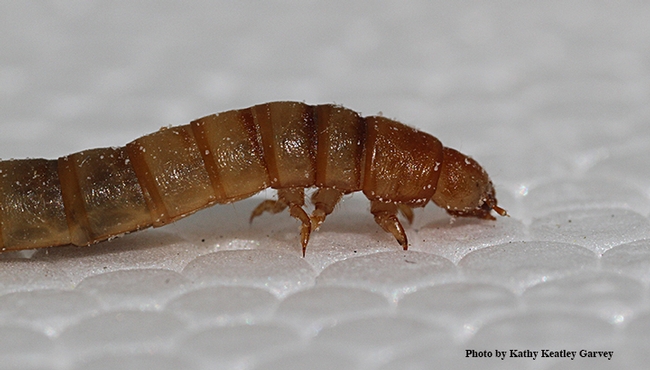
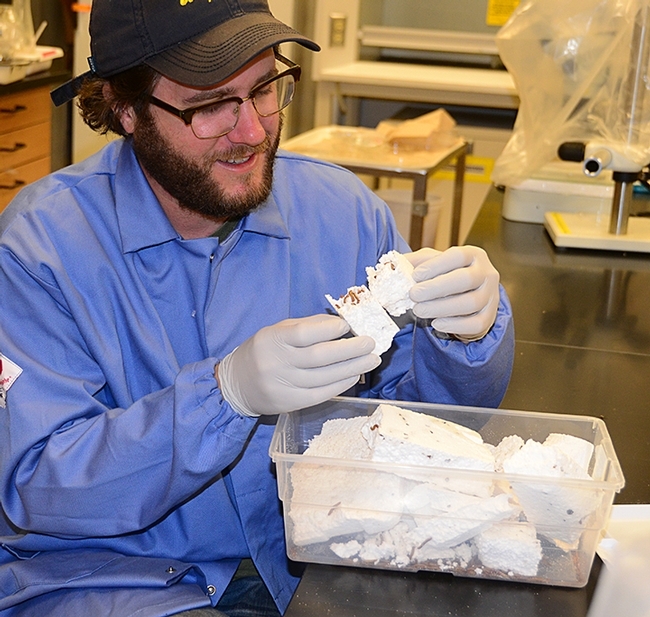
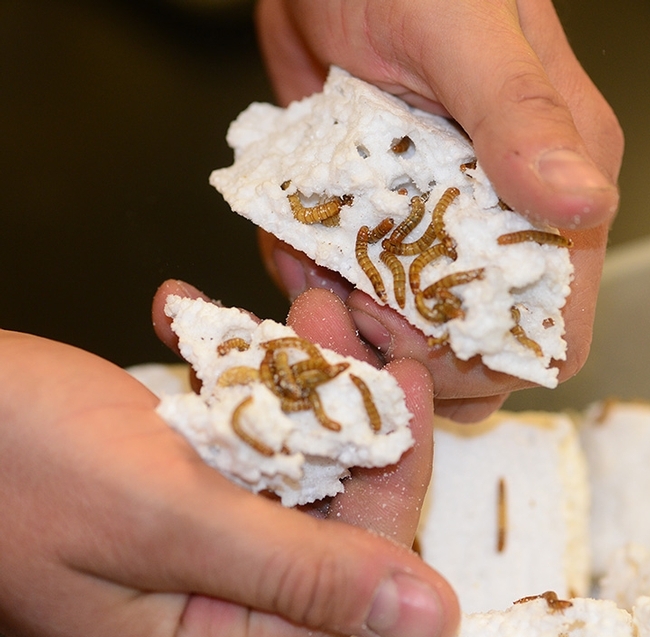
- Author: Kathy Keatley Garvey
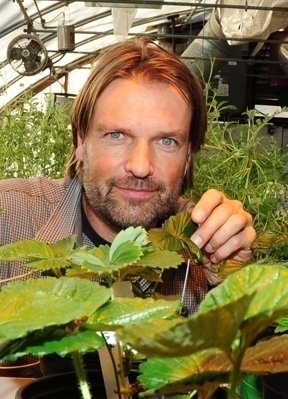
The brown planthopper, Nilaparvata lugens, or BPH, is the economically most important rice pest in Asia. It's found only in southeast Asia and Australia, but the methods that a nine-member research team used may be appropriate here in the rice-growing areas of California, says UC Davis agricultural entomologist Christian Nansen, who was part of a nine-member team that just published first-of-its-kind research. It appears in Scientific Reports of the journal Nature.
Using the sustainable pest management method known as "the banker plant system," they did field and laboratory work in China with good results: attracting alternative hosts to parasitoids of rice insect pests, can help protect a rice crop. The players: a grass species, a planthopper, and an egg parasitoid.
Research results showed that BPH densities were significantly lower in the rice fields with the sustainable pest management practice known as the banker plant system compared to control rice fields without the banker plant system, the scientists said.
“Many people are familiar with the concept of a ‘trap crop'-- a sacrificial crop which is planted mixed in with or adjacent to an economically important crop and the trap crop serves to manipulate pests away by offering them a more attractive/suitable host alternative,” said Nansen, an assistant professor with the UC Davis Department of Entomology and Nematology. “The use of banker plants in pest management is similar to the use of trap crops, but banker plants typically have multiple ecological functions.”
The researchers planted a grass species, Leersia sayanuka, next to rice. It attracted a planthopper (Nilaparvata muiri), which does not infest rice.
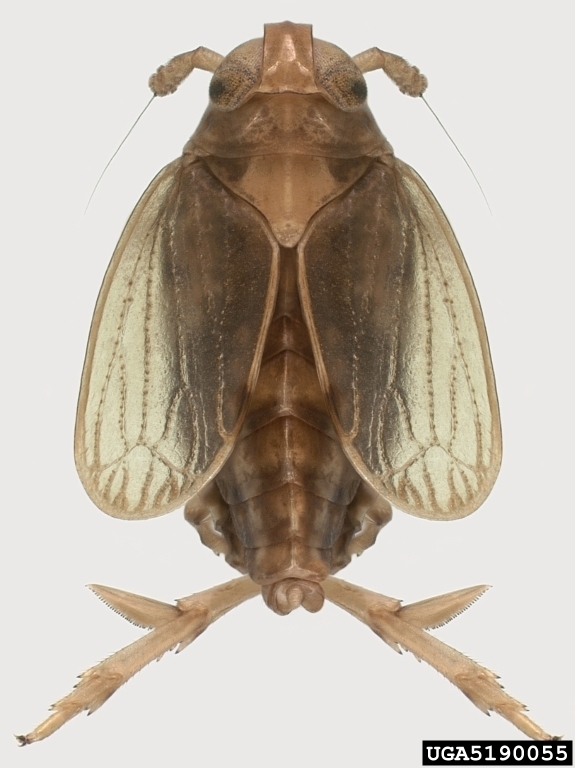
Rice is the stable food of more than 50 percent of the global population, and 60 percent of the Chinese population. However, scientists concur that the world's rice production needs to increase drastically over the next three decades to meet the growing food demand in Asia. Growing concern over BPH outbreaks and higher pesticide usage led to the sustainable pest management study.
Titled “Use of Banker Plant System for Sustainable Management of the Most Important Insect Pest in Rice Fields in China,” the research is unique in that it is the first published study describing the attraction of alternative hosts to parasitoids of rice insect pests. In rice systems, previously published research involved planting sesame as a nectar source to promote the establishment and persistence of a predatory bug; and studies involving parasitoids.
BPH feeds on the rice crop at all stages of plant growth and can also transmit two viruses, rice ragged stunt virus, and rice grassy stunt virus. Damage can commonly result in a 60 percent yield loss. An infestation is often called “hopper burn,” referring to yellow patches that soon turn brown.
Noting the importance of the banker plant system, Nansen said that banker plants “involve promotion of plant diversity to enhance pest self-regulatory ecosystem functions, such as predation and competition, to reduce susceptibility of agricultural crops to native and invasive pests. Also, banker plants “may provide resources, such as shelter, pollen and nectar or alternative preys to improve the establishment and persistence of beneficial insect populations used to control a specific pest.” The first successful banker plant system, developed in 1977, involved tomato as the banker plant, a parasitoid and a whitefly.
Nansen is affiliated with both UC Davis and the Zhejiang Sustainable Pest and Disease Control, Institute of Plant Protection and Microbiology, Zhejiang Academy of Agricultural Sciences, Hangzhou, China.
Co-authors of the research paper include lead author Zhongxian Lu and colleagues Xusong Zheng, Yanhui Lu, Junce Tian, Hongxing Xu, all of the Zhejiang Sustainable Pest and Disease Control; and Pingyang Zhu, Facheng Zhang and Guihua Chen of the Jinhua (China) Plant Protection Station.
The study was jointly supported by the National Key Research and Development Program of China, Zhejiang Key Research and Development Program, and the Special Fund for Agro-scientific Research in the Public Interest.
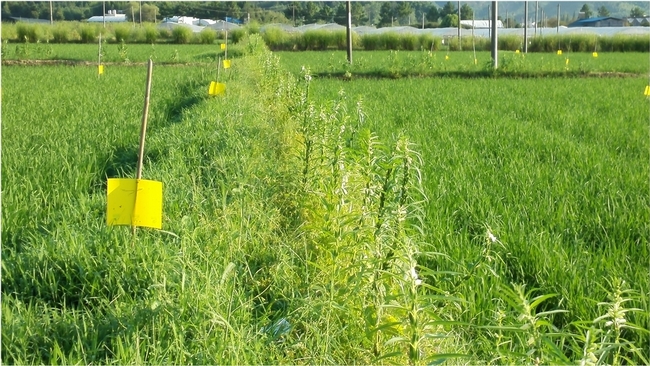
- Author: Kathy Keatley Garvey
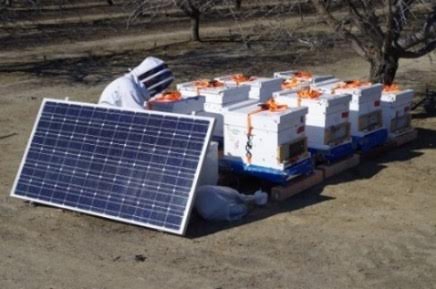
Research entomologist William Meikle of the Carl Hayden Bee Research Center, Agricultural Research Center, U.S. Department of Agriculture (USDA-ARS) will speak on "Using Continuous Monitoring to Measure Colony-Level Behavior in Social Insects: A Case Study with Honey Bees" when he visits the University of California, Davis, on Wednesday, March 15.
His seminar, open to all interested persons, will take place from 4:10 to 5 p.m. in 122 Briggs Hall, Kleiber Hall Drive.
Meikle, who joined the Carl Hayden Bee Research Center in 2012, conducts research on continuous monitoring of weight, temperature, humidity, CO2 concentration, and other parameters in honey bee colonies, linking those data with bee colony growth and activity. "I am currently involved in investigating how various stressors, including disease incidence, nutritional stress and agrochemical exposure manifest themselves at the colony level," he says.
"Individuals are the fundamental units of the social insect colony and are thus logical subjects for the study of those colonies," Meikle explains in his abstract. "However, such colonies also exhibit emergent properties or behaviors, such as forager traffic and brood nest temperature control in this case honey bee colonies, that can only be measured using colonies or groups of bees."
"Honey bee colonies offer singular opportunities for study because they can be taken apart with little or no adverse effects, and because they are typically stationary and so can easily be fitted with sensors or placed permanently on electronic scales. The resulting continuous sensor data, such as the weight and temperature data we have focused on, provides information on colony behavior and on how colonies respond to changes in the environment. The idea is that once we know how to interpret continuous data, we can then collect continuous data as response variables in manipulative experiments."
Meikle says much of the work "has focused on collecting such data to monitor behavior of honey bee colonies subjected to sublethal concentrations of pesticides. Because colony behaviors depend on the proper functioning and coordination of many individuals, changes in those behaviors may emerge at lower pesticide concentrations than have been found to affect individual biology. Indeed, field and cage studies showed significant effects at pesticide concentrations as low as 5 ppb in sugar syrup."
Meikle received his bachelor's degree in biology from Pomona College, Claremont, in 1982, and his doctorate in entomology from UC Berkeley in 1992. His career took him from UC Berkeley to the West African country of Benin, then to France, then back to the United States--Texas and Arizona.
After earning his doctorate at UC Berkeley, Meikle served as a scientist and postdoctoral fellow from 1992 to 2001 at the International Institute of Tropical Agriculture (IITA), Calavi, Benin, where he developed an ecological and economic framework of stored product systems in West Africa, including population models of important pests (larger grain beetle and maize weevil), natural enemies (including insects and insect pathogens), sequential sampling plans and scouting programs for farmers, and links of pest population dynamics to weather and to local commodity prices.
Two other positions followed:
- 2001-2009: European Biological Control Laboratory, USDA-ARS, Montferrier-sur-Lez, France, where he researched the use of entomopathogens, such as fungi and nematodes, as biological control agents against different pests, including locusts, termites and Varroa mites of honey bees. "We collected naturally occurring entomopathogenic fungi of Varroa mites, including a new species, and evaluated biopesticide formulations," he related.
- 2009-2012: Honey Bee Research Unit, Kika de la Garza Subtropical Agricultural Research Center, USDA-ARS, Weslaco, Texas, where he explored the ecology and population dynamics of small hive beetles, a recently introduced pest of honey bees in the U.S. "I collaborated with other researchers in investigating the biological control of the Asian citrus psyllid and the larger black flour beetle."
Meikle's seminar, hosted by the UC Davis Department of Entomoogy and Nematology, is the last seminar of the winter quarter. Agricultural entomologist Christian Nansen (chrnansen@ucdavis.edu), assistant professor in the department, coordinates the seminars. They are recorded for later viewing on UCTV.
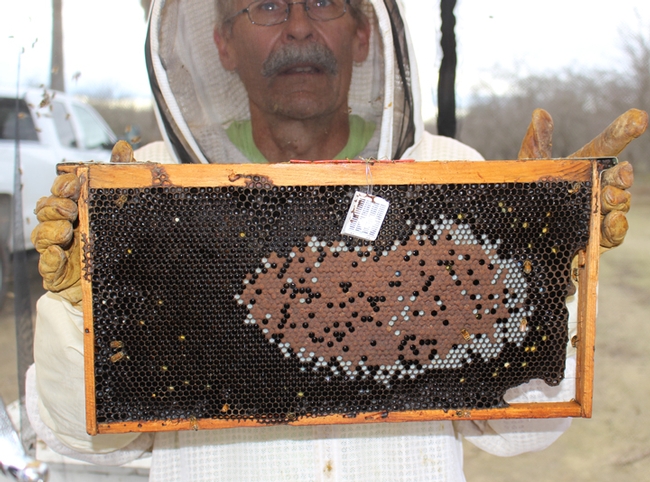
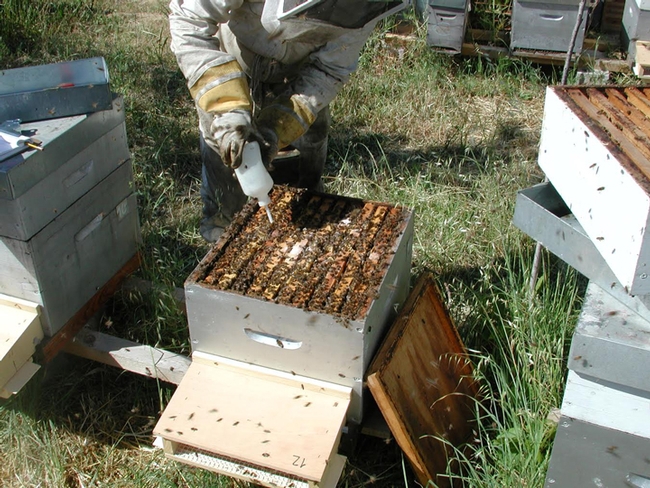
- Author: Kathy Keatley Garvey

Devoted to research, teaching and public service, he'll speak next week on “Urban Food Production in the Digital Age—Local Empowerment and Sustainability” as part of the UC Davis Community Book Project, which focuses on award-winning writer, activist and academic Raj Patel's work, Stuffed and Starved: The Hidden Battle for the World Food System.
Nansen, an agricutural entomologist with the UC Davis Department of Entomology and Nematology, will deliver his presentation from 12 noon to 1 p.m., Wednesday, Jan. 18 in the Memorial Union's Garrison Room, UC Davis campus.
Sustainable pest management solutions in agricultural systems is a key component of Nansen's research, and he and his team focus on deployment of drones and imaging systems to optimize stress detection of pest outbreaks. In his leisure time, he is converting his back and front yards in Davis "into an urban farming system."
In his Jan. 18 seminar, Nansen will cite several important reasons why urban and suburban citizens "should increase their level of self-sufficiency and resilience when it comes to food production."
In many respects, Nansen is a citizen of the world.
Born and educated in Denmark, Nansen received his master's degree in biology from the University of Copenhagen in 1995 and his doctorate in zoology from the Royal Veterinary and Agricultural University in Denmark in 2000. He accepted positions in Portugal, Benin, United States, UK and Australia before joining the UC Davis Department of Entomology and Nematology in January 2015 as an assistant professor who focuses on insect ecology and remote sensing. His international experience also includes being an international exchange student at the University of Lisbon, Portugal and a visiting professor at Northwest A&F University, Yangling, China.
As part of his undergraduate studies, Nansen took time off to travel to Brazil to write a book about sustainable agriculture in rainforest areas. “In this process," he related, "I learned about the potential of honey bees as both pollinators of crops but also as ‘promoters' more broadly of sustainable agricultural development."
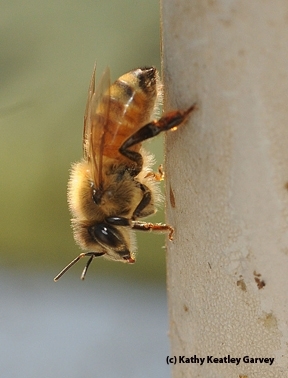
For his doctorate, his interest turned to the larger grain borer, a serious pest of stored maize and dried cassava roots. He wrote his dissertation on “The Spatial Distribution and Potential Hosts of the Larger Grain Borer, Prostephanus truncatus (Horn) (Coleoptera: Bostrichidae), in a forest in Benin, West Africa.” His research involved stored product insect ecology, field trapping with pheromone traps, experimental work on pheromone production, vegetation analysis, satellite image interpretation, laboratory infestation of potential breeding substrates, and histological studies.
Nansen recalled that his childhood exposures to international scientists played a major role in his choice of a career. His father, a professor in veterinary parasitology, entertained many colleagues in the family home. “And my mother cooked the food! This is probably the main reasons why I enjoy both cooking and why my career has been so international.”
“Even though Denmark is a very small country (5 million people),” Nansen said, “it has been at the forefront of agricultural research and production for many decades. And growing up, my father took me on field trips and exposed me to farming systems.” In fact, young Christian earned his weekly allowance in the chicken business: he sold eggs to neighbors.
In an earlier interview, he expressed delight at seeing a “steadily growing appreciation for the origin and quality of the food we eat," noting that "today, in the 21st century, the technologies deployed in modern agriculture are so advanced and similar to the cutting-edge technologies in other fields. Those technologies require skill sets beyond what most people may be aware of. Use of drones, remote sensing, GIS models, mathematical models of weather, crop physiology and soil dynamics, models to optimize input requirements and minimize economic risks, phone apps to optimize applications of agro-chemicals – these are all skill sets and approaches we are using as part of studying food production systems and developing innovative and reliable tools to be used within the agricultural sector.”
On Thursday, Jan. 19, the day after the UC Davis Community Book Project presentation, Nansen will give a seminar on "Droplets of Evolutionary Biology: Theoretical Modeling of Resistance Evolution to Insecticides" from 4:10 to 5:30 p.m. in 100 Hunt Hall as part of the UC Davis Evolution and Ecology winter-quarter seminars.
He is also coordinating the UC Davis Department of Entomology and Nematology's winter seminars. As part of those seminars, he'll speak Wednesday, March 1 from 4:10 to 5 p.m. on "Reflectance Profiling as a Tool to Study Insects and Other Objects" in Room 122, Briggs Hall.
All the presentations are free and open to the public.



